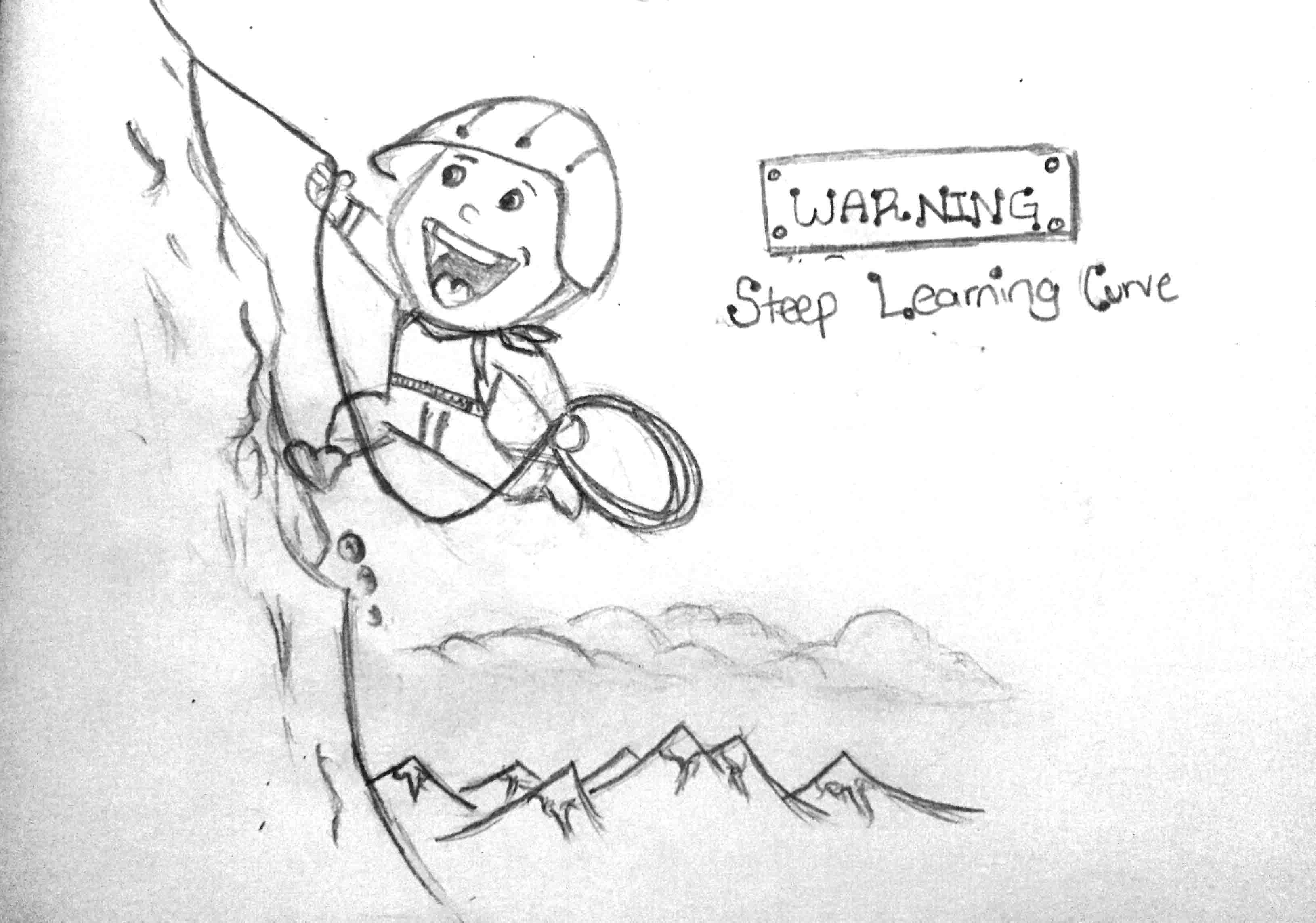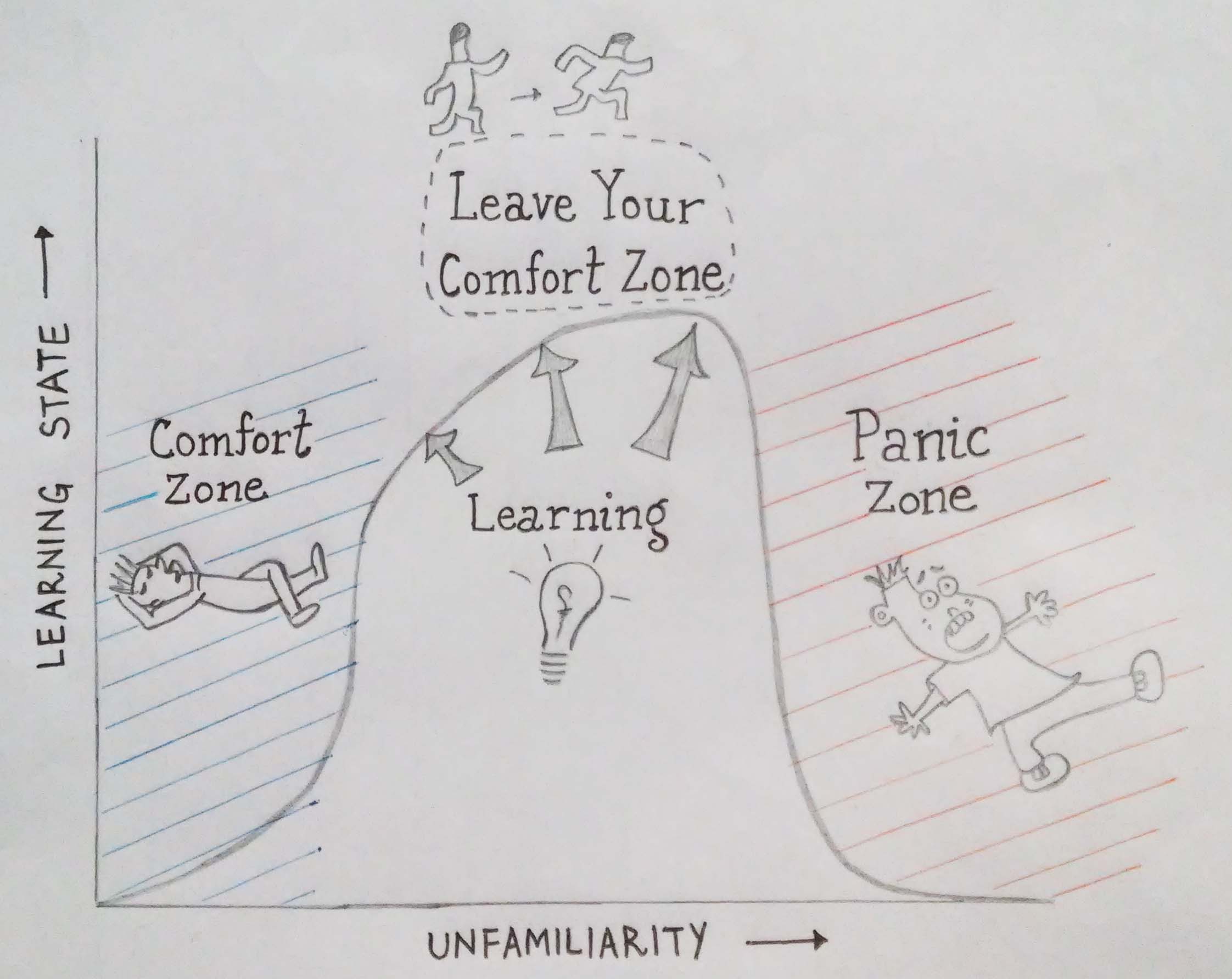The Learning Curve
As a learner, difficulty is almost always proportional to learning. Literally every day I try to get out of my comfort zone, sometimes I fail, sometimes I get things done and sometimes I end up Yak-Shaving. Well let’s talk about Yak Shaving for a few seconds.
You want to borrow your neighbours hose so that you can wash your car, but remember last week? You broke their rake, so you need to go to the hardware store to buy a new one and that means driving to the hardware store, Now you start looking for your keys. You eventually find your keys inside a tear in a cushion - but you can’t leave the cushion torn, because the cat will destroy the cushion if they find a little tear. The cushion needs a little more stuffing before it can be repaired, but it’s a special cushion filled with exotic Tibetan Yak Hair. The next thing you know, you’re standing on a hillside in Tibet shaving a yak and all you wanted to do was wash your car.
The 10,000 Hour Rule
In his book “Outliers - The Story of Success”, author Malcolm Gladwell says that it takes roughly ten thousand hours of practice to achieve mastery in a field. He went on to study the life of highly successful people to find out how they achieved success.
As per Gladwell’s research: We could choose a field, practice it for 10,000 hours and voila! You ahve mastered the skills.
By now you already know the mantra of success, It’s that simple: Drop out of college, start a company, and become a billionaire, right?
Wrong.
Deliberate Practice
Thanks to “Outliers” by Malcolm Gladwell, people mistakenly think if they practice something for 10,000 hours they will become great at it.
Anders Ericsson, the professor who first theorized the 10,000 hour rule, has me corrected on this. “It’s not practice, but deliberate practice.” He says.
“You have to have feedback as quickly as possible. 10,000 hours with a mentor, with constant feedback, is critical.”
What better feedback than skateboarding? You skate, you make a mistake, you fall, you bleed. Repeat.
If you don’t get better, you break bones and have to stop. If you learn from your mistakes with the help of you coach, you stop bleeding.
If you are thinking about a starting a business it become more difficult. It can take years for a business to fail or succeed. So you don’t get that instant feedback.
So the best approach to get better at something like business, or writing, or anything, you have to break it up into small chunks that teach you quickly how not to fail.
Optimising The Learning Curve

Optimised learning curve refers to the steepest learning curve. A good way to identify the steepest learning curve is to look out for the most difficult task at hand. Choose difficult task and keep yourself constantly under pressure.
One needs to find the right balance between being under pressure and managing stress at the same time, this varies from individual to individual, so you’ll need to fine tune it to your likeness.
For example when you have multiple tasks for perform, choose one with the most imminent deadline. You can beat procrastination like this.
Another sign for spotting steepness is unfamiliarity with the “body of knowledge” under consideration. If you keep practicing things that you’re already good at, you’re not actually learning much, you are just stuck in a vortex. Sometimes, constant work in a single area is required - like for domain experts who want to dive deeper, but for most learners (especially undergrads) this is not true.

When choosing a problem you have 3 choices :
- You already know how to solve it (Comfort Zone)
- You don’t know how to solve it, but you know what to learn in order to solve it (Learning Zone)
- You are clueless and have no idea about the problem (Panic Zone)
Another important thing is to realize when to leave a particular learning activity. Learning something new and interesting is often like reading a thriller novel - We find it boring first, then we are totally into it and at the end all the secrets are exposed.
You need to know when to stop reading that novel. You need not become a world expert at everything. Your expertise should be ‘T’ Shaped - Knows a bit about a lot of things and knows a lot about something. Change your niche when you think you’re not learning enough.
*Illustrations by Arwa Khalid and Natasha Wani .
*With inputs from Mir Nazim.
Share this article: